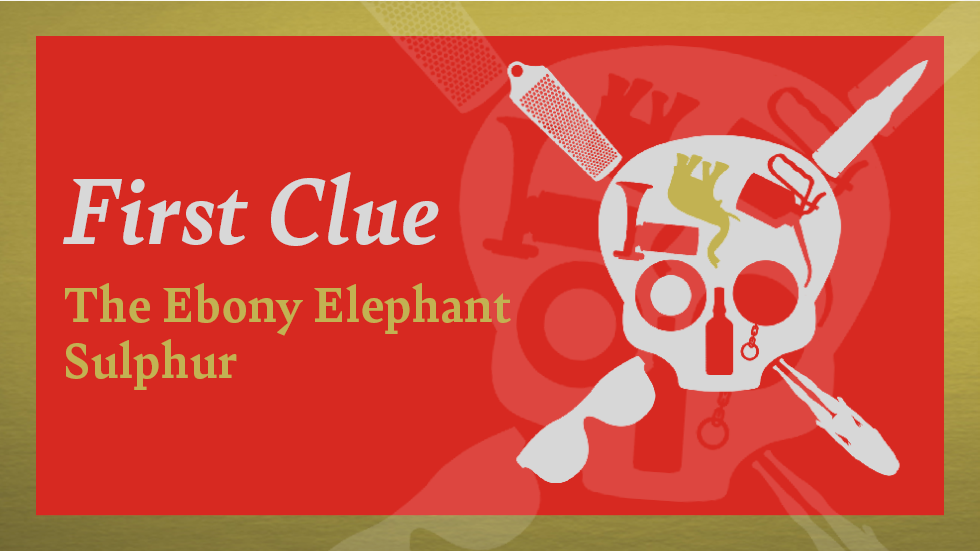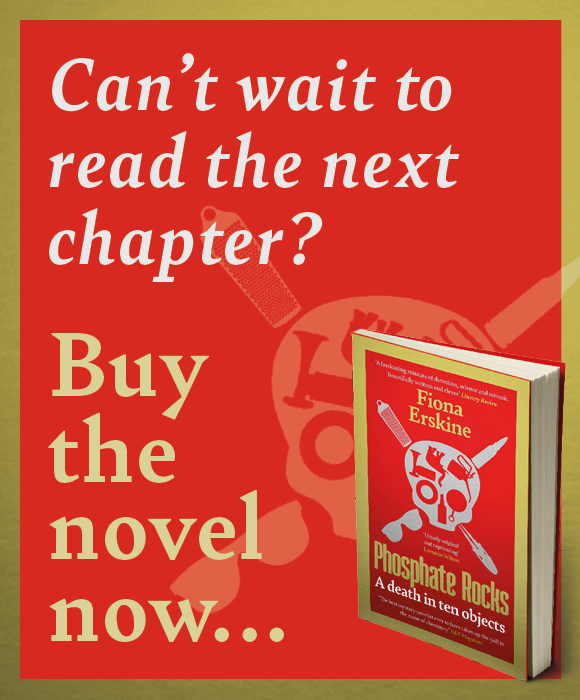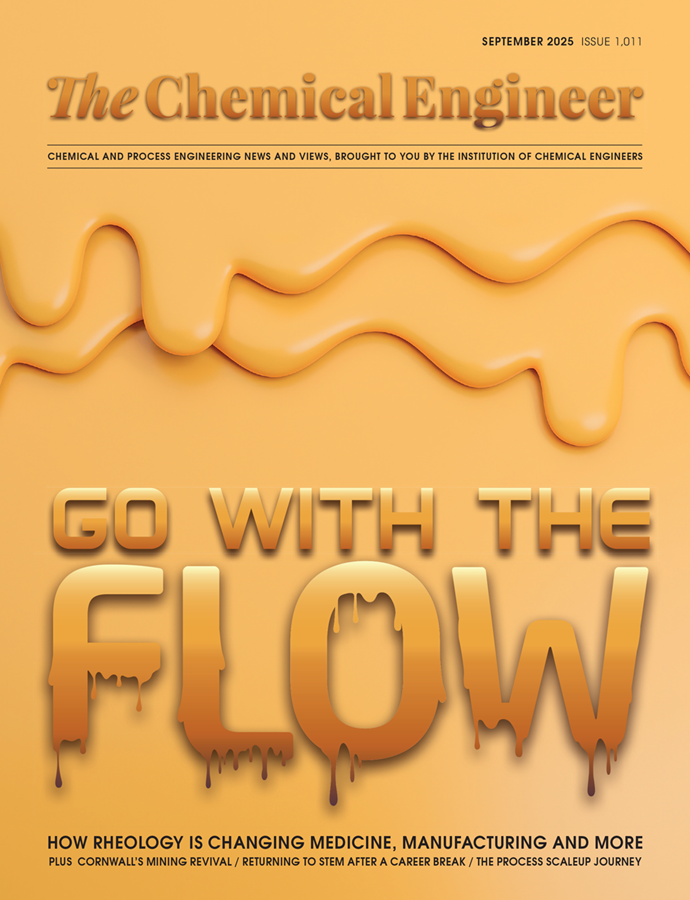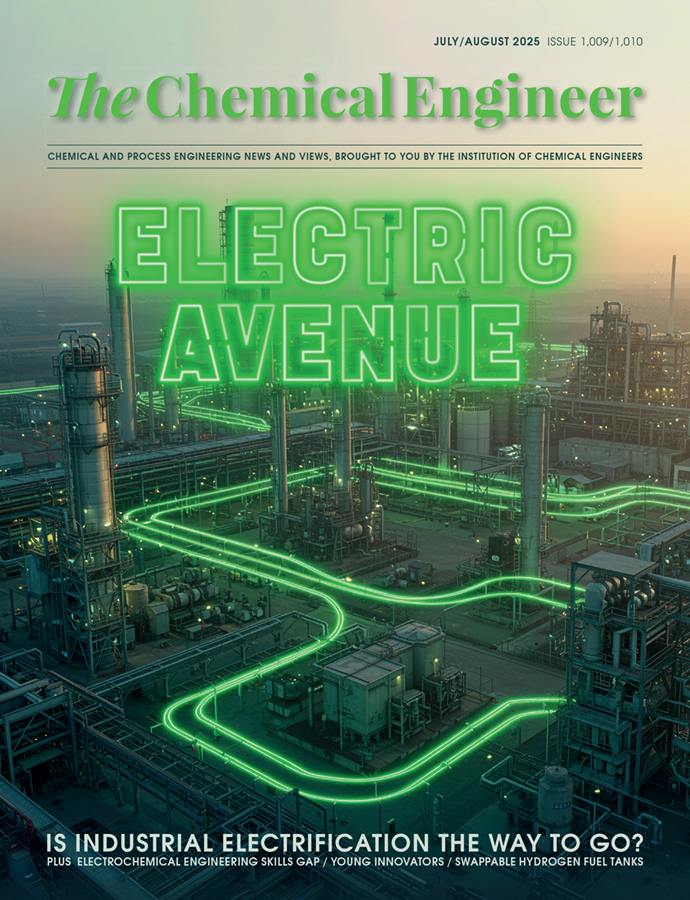Phosphate Rocks Chapter 5: A Ruptured Hose

The Eylenya was one of the fast boats that sailed from Holland, bringing sulphur straight from the petrochemical refineries of Rotterdam. The skipper of the Eylenya, Captain Jan Bosma, a phlegmatic native of Middelburg in Zeeland, was a regular visitor to Edinburgh.
Inside the ship’s hold, the flakes gleamed bright yellow and smelt bad. Sometimes the sulphur caked and set solid in huge slabs that had to be broken up by hand. The stevedores, responsible for offloading raw materials at Leith docks, loathed sulphur. The slightest friction set it on fire and the stench of the gas made them puke – sulphur monoxide, sulphur dioxide, sulphur trioxide – choking and deadly.
Before the stevedores could start offloading, a factory representative boarded the ship to inspect the manifest – the cargo – and agree the offloading plan. Ship crews used to the efficiency of Singapore or Rotterdam were surprised by Leith docks. The stevedores operated only during daylight hours, with prolonged breaks for breakfast, dinner and tea. For some seamen it made a welcome change from arriving and unloading on the same day. The crew could disembark, walk up Constitution Street and catch a bus to the centre of Edinburgh and the glories of the old town looming over the new.
New in 1830 that is.
John always volunteered to carry out the inspection if he was on shift when the ship arrived. He befriended many of the captains over the years. They brought him small gifts, and he hoarded these trinkets in a large cupboard set aside for the purpose, waiting for an opportunity to distribute a miniature bottle of schnapps, a leather strap or a woven bangle to a particularly deserving team member.
Once the cargo was accepted and the loading plan agreed, the Leith stevedores scaled one-hundred-foot ladders and settled down in the cabs of two huge cranes. Working in tandem to a precise, if unwritten, choreography, they took turns to lower the grab buckets into the ship’s hold, lifting the flakes, and depositing the yellow brimstone into open-topped lorries that sped to the entrance of the fertiliser factory half a mile away. Streamers of yellow dust fanned through the teeth of the buckets, occasionally catching fire. Ribbons of blue flame sparkled and crackled against platinum skies. When a sulphur boat came in, John always requested an extra man from the factory day crew to stand ready to extinguish the sulphur fires with seawater from a red rubber hose.
Inside the factory, John managed his shift team with an iron fist, assigning tasks and tracking performance with military precision, but the two day teams were controlled by others.
The maintenance crew of welders, riggers, turners, tiffys, sparkies, carpenters, mechanics and fitters were ably managed by Roderick, an energetic marine engineer who responded to dry land with perpetual motion. He paced the miles of factory road, from dockside to ammonia spheres, from sulphur melters to Nitram packing, from workshop to store, a lightning flash of white hair and wisdom.
The services crew managed themselves, contrary to the belief of the blustering, ineffectual university graduate who imagined that workmen could be led from the comfort of an office, and provided the manual labour according to a strict hierarchy. At the top sat the wannabe craftsmen, those who didn’t make the grade for a full apprenticeship but could drive a forklift truck and speak the lingo. Tolerated as craft assistants, they carried tools, fetched spares, sorted scrap and brought extra muscle, elbow grease or welly as required. In the middle lay those who unloaded the raw materials or packed the product. At the bottom skulked the greasers.
A fertiliser factory hums with moving parts. As one surface rubs against another it causes friction and wear. Regular adjustment and lubrication prevent breakdown. Gearboxes must be topped up with oil, rotating shafts greased with a thick lard-like jelly, packing injected from the nozzle of a special gun. The greasers performed these vital factory tasks, and not just lubrication, but machinery attendance. The same person laid hands on the same machine every few days. They felt compressors running hot, heard pumps squealing, smelt burning rubber from slipping drive belts, saw unwelcome flecks of shiny metal glittering in oil sumps. Expert – if unconscious – tribologists, they might be unaware of Stribeck curves and elastohydrodynamic rheology, but the maintenance manager, Roderick, relied on them totally. Not just for lubrication, but for condition monitoring, early warning of impending failure. Despite the pivotal importance of the role, tradition dictated that the job of greaser went to the humblest man.
The three greasers were, each in their own way, a couple of sandwiches short of a picnic. Fat Willy had probably eaten all of his, along with many deep-fried suppers washed down with pints of heavy. His curly hair and ruddy face waggled atop a spherical body propelled by short legs that lumbered from job to job. He entertained colleagues with musical farts and half-remembered dirty jokes. The punchlines were often delivered at the last minute by Smart Sandy.
Fat Willy’s sidekick was the same height but a quarter the girth, a dour bald man wearing a permanent scowl that belied an uncomplaining, obliging nature.
Smart Sandy (named ironically) followed Fat Willy’s instructions without question, scaling giant ladders and limbo-dancing under pipes, sometimes to reach a grease nipple, sometimes just for the entertainment of others, oblivious to the laughs and jeers that rewarded his puppet-like antics and ventriloquist dummy one-liners. The first two kept their distance from the third member of the grease team.
Becksy usually worked alone. Perhaps from preference, but he smelt so bad on Monday mornings that no one really cared to find out. Even if they had wished to ask, the profoundly deaf man could neither read nor write and his version of sign language was not understood in Leith. Nevertheless, when it came to preventative maintenance, Becksy was the smartest of the crew.
One February morning Fat Willy had been summoned from normal duties to stand fire watch for the Eylenya, leaving Smart Sandy to complete his lubrication round alone. Grumbling and chuntering at the inconvenience, Fat Willy connected a fire hose to the first hydrant he came across and stretched the long red snake across the roadway that connected the dock to the plant. He opened the valve and propped up a couple of old crates to sit on. He was settling down in the winter sunshine, when John came running towards him, arms flailing like windmills.
Too late.
The lorries moved faster than John. The drivers didn’t even notice the red hose as they drove over it. Duh-duum, duh-duum, duh-duum, duh-dumm. Eight sets of wheels compressed and released the hose in two places, six feet apart, each pair of steel-reinforced tyres stretching and pinching, warping and snagging, scraping and dragging against the gravel. One lorry and then another drove forward as they lined up to receive the sulphur.
John arrived in time to halt the third lorry. He bent to inspect the hose just as it sprang a leak. A spray of ice-cold seawater hit him full in the face.
Fat Willy remained frozen beside the hydrant until Captain Jan Bosma barked at him to stop the flow. His palms sweated against the wheel of the sea-water valve, slipping and sliding as he struggled to turn it clockwise, but gradually the height of the fountain diminished, and John appeared through the spray, soaked from head to toe.
‘Catch!’ The captain threw a towel from the ship. The greaser grabbed it and waddled towards John, arms outstretched, his face sweetened by a nervous smile.
John rarely smiled. He was sensitive about his teeth. The effort to keep his mouth closed, coupled with a reflex which jerked his hand up to cover it, kept his emotions hidden. The skin wrinkling briefly around narrowed eyes was the only clue.
His laugh, on the other hand, could not be missed. It was Halloween. His long thin body went into spasms, twitching and gyrating as deep bellows developed into a series of high-pitched shrieks. It went on too long. People were rightly afraid of John’s laugh. The master of sarcasm, John managed to make an outbreak of mirth indicate just the reverse. He used it to warn, to belittle, to chastise, to punish. No words were necessary. A prolonged manic laugh from John was enough to elicit complete surrender, abject capitulation from the subject of his attentions, a breast-beating mea culpa, a sincere apology, a genuine resolution not to let him down again.
John turned his weaponised laugh on Fat Willy, decreasing the distance between their noses, trembling with vibrato, stretching the rubato, increasing the pitch and volume, until the greaser dropped his eyes in sulky apology.
John ordered him to roll up the damaged hose and carry it, by himself, one hundred yards away and hook it up to the correct hydrant. Confused, Fat Willy obeyed. Satisfied that his point was made, John instructed him to disconnect it and carry it one hundred yards back to where he started, and then a further five hundred yards to the workshop for repair. He radioed for the storeman to find Becksy, a greaser he could trust, and send him down with a new fire hose and a set of dry clothes.
The ship’s captain lent John his cabin, along with a nip from his hip flask.
When John emerged in dry overalls, the stevedores observed from the cranes as the fire-fighting precautions were reinstated by Becksy and minutely inspected by John. They waited until the moment he gave the go-ahead to resume operations before calling a halt for break time and downing tools. Captain Jan Bosma telexed the shipping line to inform them that the Eylenya would be an extra day in port.
Captain Bosma took advantage of the extra time in Edinburgh to attend the opening of an exhibition by modernist artist Dan Flavin(xxv), at the Modern Art Galleries in the Botanic Gardens. He responded so enthusiastically to the soothing artistic effect of coloured neon lights in empty white rooms that he decided to declutter his own cabin.
It snowed overnight. A fine dusting of pure white settled over the Eyleyna, its yellow cargo, the tall rust-red cranes, the blue seawater hydrant and the grey concrete dock. The morning sun burned though the haar as John’s boots crunched across sparkling snow, a vast expanse of white marked only by the quatrefoils of birds’ feet and the diamond tracks of an intrepid fox.
‘Goedemorgen!’ Captain Jan Bosma was already on deck. A tall man, even for a Zeelander raised on herring and milk, he stretched his spine, hands behind his head, surveying the clean white empty dock. If he was dismayed at the lack of activity, he was polite enough not to comment.
John nodded at the silent cranes. ‘Stevies are meeting now. They won’t restart until the snow’s away.’ He grimaced. ‘Maybe the morrow.’
The captain offered John a mug of coffee and they stood side by side, one on the ship, one on the dock, and sipped the hot, bitter liquid. It tasted better, richer, in the snow. The captain nodded at the neatly coiled hose, now frosted with diamonds. ‘You fully recovered from your soaking?’
‘I’ll live,’ John replied. ‘How was your exhibition?’
The captain beamed and described the regenerative effect of minimalism in glowing terms before adding, ‘I have some-thing for you.’
He held out the ebony elephant, picked up in Colombo and now, after the decluttering, surplus to decorative requirements. As John reached across the ship’s rail to exchange an empty coffee mug for the carved gift, one of the little tusks fell through the snow into the sulphur below. The captain retrieved the wooden peg, brushed it down and handed it to John with the words of Cicero: Omnium rerum principia parva sunt.
Everything has a small beginning.
Further snowfall kept the ship in dock. The owners were not amused as they counted the costs of delay. They never made the mistake a second time.
The price of importing sulphur rose. The first nail in the factory coffin.
John visited the exhibition ‘monument’ for V. Tatlin by the minimalist artist Dan Flavin on his next day off.
Although entry was free, he felt cheated.
One. Two. Three. Four. Five. John counts the tiny ridges as he runs his left pinkie across the trunk of the little elephant. Water from an elephant’s trunk. Water from hoses. John knows where the elephant came from and when.
‘1975,’ he says and looks up at Detective Inspector Rose Irvine.
Her eyes flash. The eyelashes are almost white, only the blue tips where she has applied mascara are defined. She waits.
‘Jan Bosma,’ he says. ‘Captain of the Eylenya, a sulphur boat, brought this to Leith docks.’
She writes something down. She is left-handed and uses her right hand to shield her notes from view. The cuticles are ragged, zigzagging around the base of short, irregular fingernails. She must bite them.
‘February 1975.’
‘How can you be so sure of the date?’
‘It snowed. I saw a daft wee exhibition of funny lights.’
She nods at the photograph of the mummified body. ‘Is this Captain Jan Bosma?’
‘No.’ John shakes his head. ‘He’s still sailing.’
The detective wrinkles her nose; the small pink triangle turns up at the tip. She sighs. Why is she disappointed? Surely narrowing down the date of death from a forty-two-year window to half of that is progress?
‘If a ship’s captain gave you the elephant,’ she narrows her eyes, ‘then how did it come to end up in the phosphate cave?’
‘I gave it away,’ John said.
She leans forward. ‘Who to?’
John places the ebony carving on the table and sits back. He closes his eyes. An elephant never forgets. Nor can John, but he isn’t ready to talk about Blind Willy.
Not yet.
Recent Editions
Catch up on the latest news, views and jobs from The Chemical Engineer. Below are the four latest issues. View a wider selection of the archive from within the Magazine section of this site.






